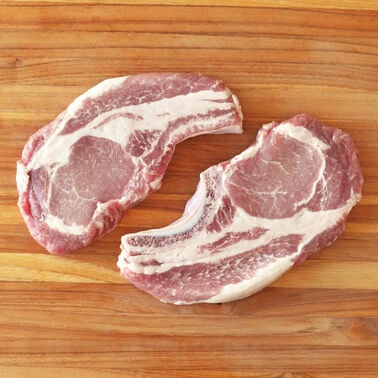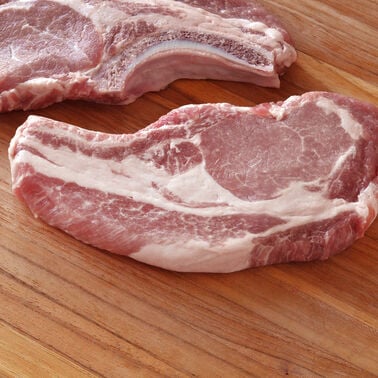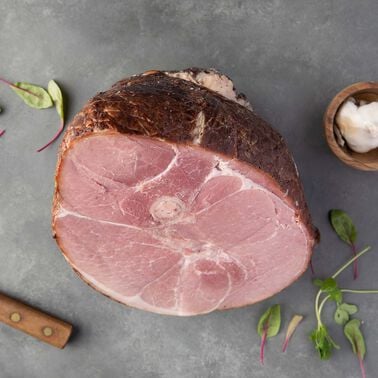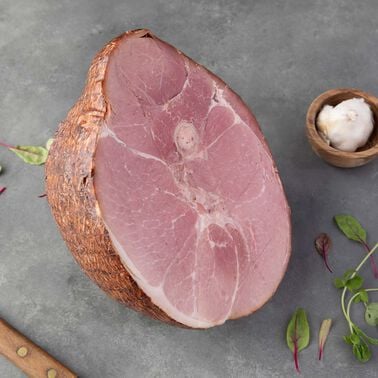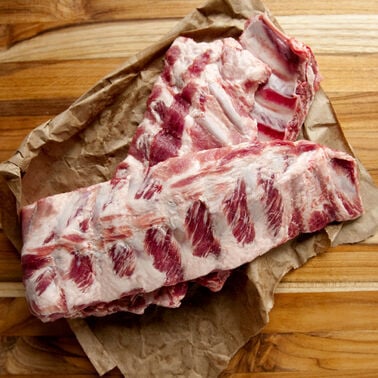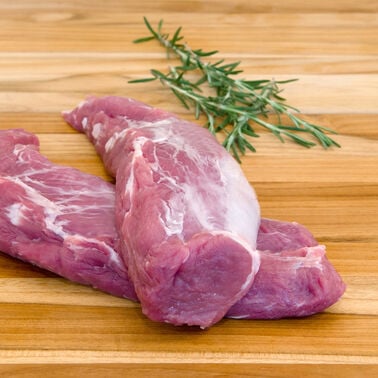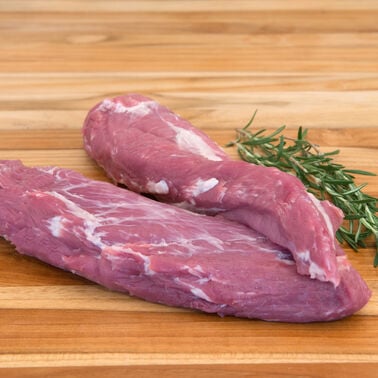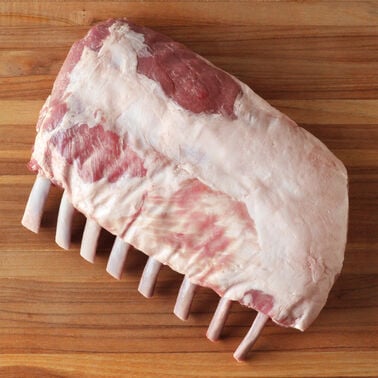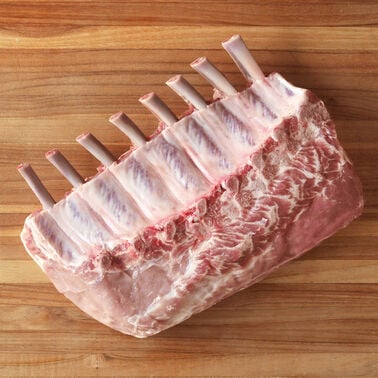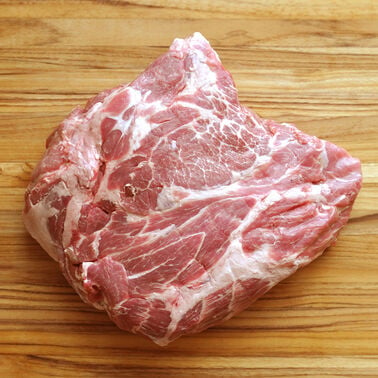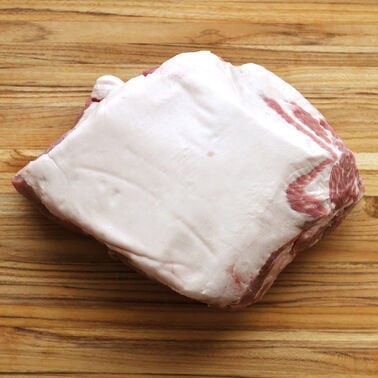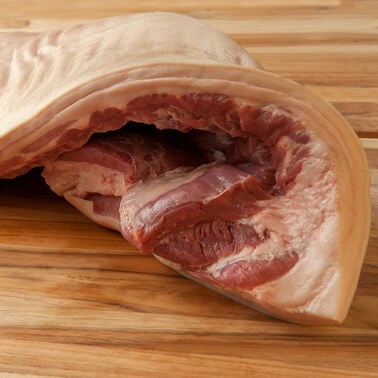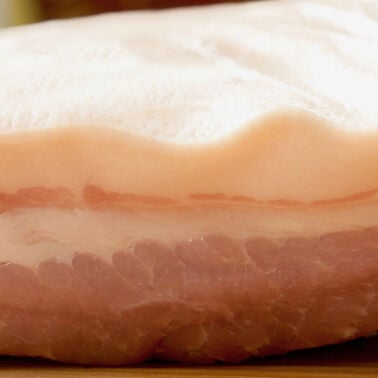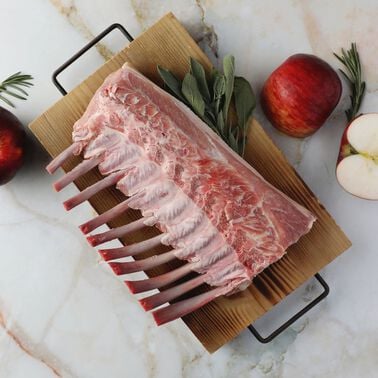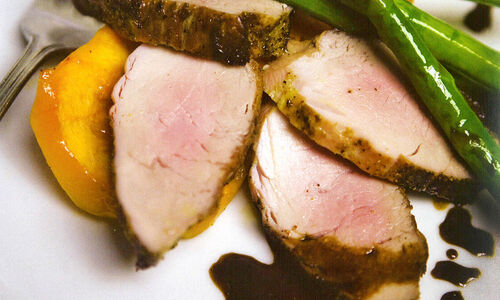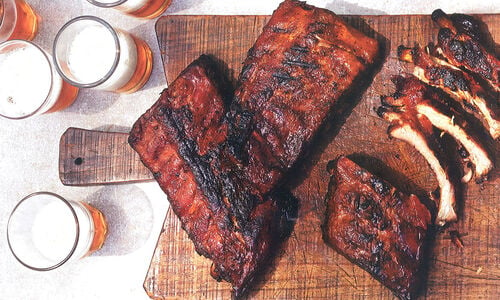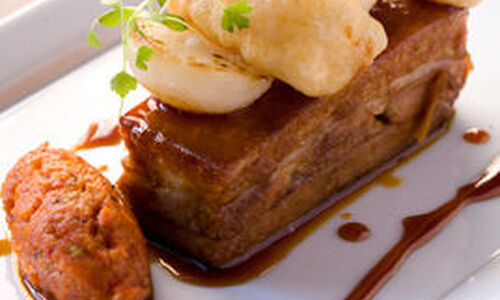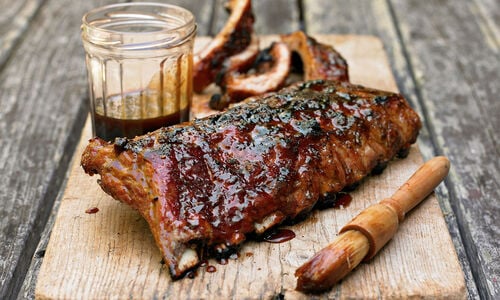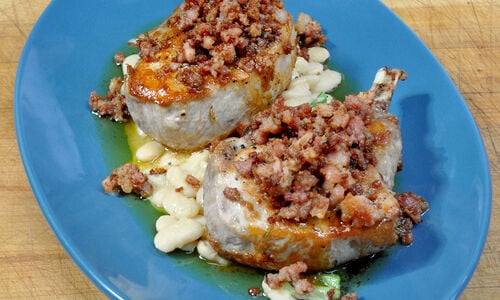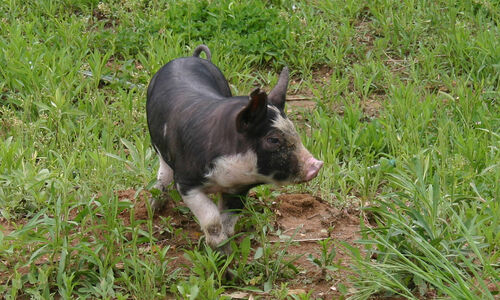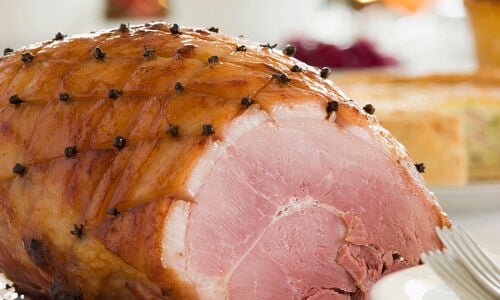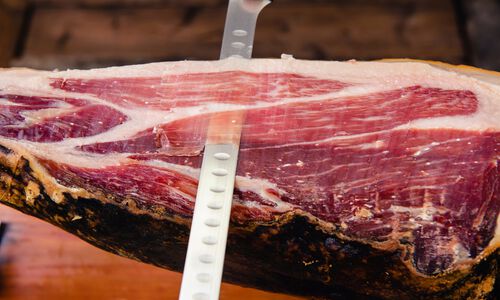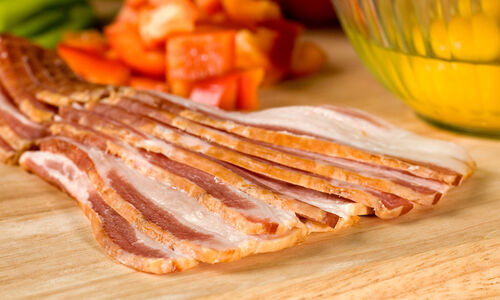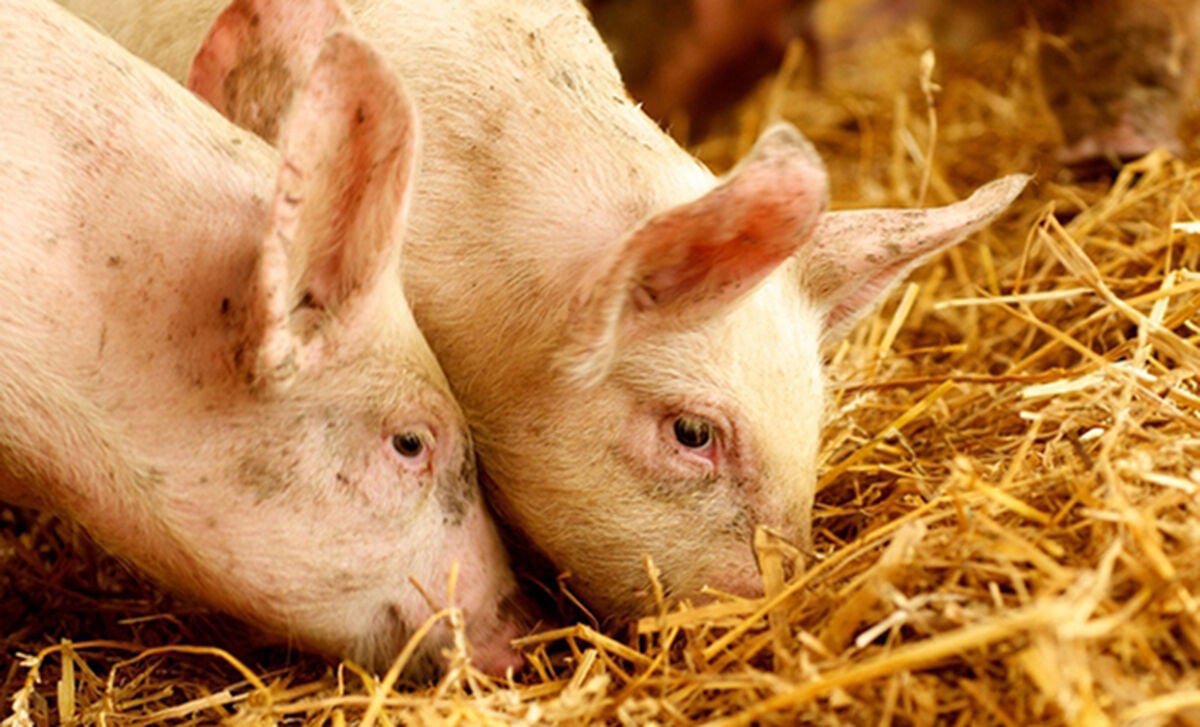
The rise of the pig began in Asia and progressed through the Near East, and eventually to Europe, where Sus scrofa domesticus really took off. It is to Spain that the Americas owe the introduction of this valuable animal, as the first pigs on the continent were brought with Columbus on his second voyage. The Spanish explorers brought pigs with them to eat on their long expeditions, and left many of them in the New World, where no large domesticated animals existed. Hernando de Soto, who explored what is today the southeastern United States, is often called the father of the American pork industry, as he brought 200 of them on his expedition. Those that remained are the ancestors of most of the pigs in the country, and certainly related to the feral pigs, or wild boar, that roam the country.
The pig is a remarkable animal, and perfectly suited to domestication. Pigs are very fertile, and sows can give birth to 15 piglets a year, which mature quickly, in six months on average. And the pig is an omnivore, most efficiently converting plants and cereals to meat. This has made it a popular choice on the farm, where table scraps, whey, and other unwanted organic materials are routinely devoured by nature’s garbage disposal: the pig. Pigs are also useful as plows—give a few pigs access to a field that needs turning, and the job is done as they search for buried roots and nuts to eat with their powerful snouts and jaws.
Breeds
Not all pigs are created equal. Traditionally, pigs were classified as one of two types: lard or bacon.
Lard-type pigs were used to produce, well, lard, before lard became synonymous with sin. Compact and thick, with short legs, the lard-stype pigs fatten up quickly and their meat has large amounts of fat in it. The Mangalitsa (also Mangalica) is an example of a heritage lard-type pig. Lard was the cooking fat of choice for generations, and was even used as a mechanical lubricant before synthetics were invented. Lard was used during World War II in the manufacture of explosives, so people switched to vegetable oils for cooking out of necessity. After the war, those vegetables oils were successfully marketed as healthier fats, and lard never stood a chance. As a result, many of the lard-type pigs went out of fashion and their breeds became scarce.
Bacon pigs are lean, long and muscular. Traditionally they were fed on legumes, grains, turnips and dairy byproducts. They tend to grow slower than lard pigs, and put on more muscle than fat. When lard-type pigs became passé, breeders turned to the leaner types, including Berkshire, Duroc, Hampshire, Poland China, and Yorkshire to produce lean pork, and sadly, very little lard.
Pork production turned from a family affair into an industrial nightmare after World War II. Pigs went from being an integral part of the small farm, with nearly every farmer keeping a few pigs, to being a commodity product grown in factory conditions. Today, the pork industry rests on a three-way cross between a few highly selected strains of the Duroc, Hampshire, and Yorkshire breeds which have been chosen for performance under intensive farming.
Humane Pig Farming
It can be done. Pork that comes from pigs raised in pasture, where they are free to root and wallow, and forage, simply tastes better than industrially-raised pork. The bland, pale meat of the factory-farmed pig is really not worth eating. Look for small producers that specify the conditions on the farm - pigs need to be outdoors, not crowded into cement-floored barns, to produce good meat. The organic label is helpful, but does not guarantee that the pigs were raised humanely outdoors. Look for pork that is raised without antibiotics or growth hormones, which is a good indication that the farmers take good care of the pigs, and do not crowd them. Prophylactic use of antibiotics is only necessary when the animals are raised intensively in factory conditions.
Farming cooperatives are becoming popular, and are often a trusted source for well-raised pork. Rather than one huge farm producing huge numbers of pigs, multiple small farms raise reasonable numbers of pigs in natural conditions. They leverage their buying power to share costs of grain and supplemental feeds, the cost of slaughter and processing, and eventually, market the pork together under one label. This creative solution means that the farmers get a higher price for their pork than commodity farmers do. It also allows access, for those that want it, to humanely-raised, good-for-you pork products in cities across the United States.
Preserving the Heritage Breeds
Eat them to preserve them. It’s the only way. Heritage breed pigs fell out of production as they are not suited to the intensive farming practices of today. Many of them take longer to grow, and require space and pasture to do so. If the pigs are not bred, their gene pool will decrease, resulting in possible extinction. These old bloodline breeds go back hundreds of years, and offer different characteristics than those honed for commercial farming. The rich, marbled fat, and tasty meat of heritage pigs is becoming more appreciated by connoisseurs. Heritage breeds to look for include Tamworth, Berkshire, Mangalitsa (or Mangalica) and Red Wattle. Sometimes it is necessary to cross heritage breeds, and the pork resulting from these crosses might be marketed as “heritage” pork, rather than by the breed name. Try switching to heritage-breed pork, raised as nature intended, outside with sunshine and ample space and see if you can’t taste the difference.
Pork Trivia
- Pliny tells us in his Natural History that pigs “have almost fifty flavors, whereas all other meats have one each.”
- Although the Jewish and Islamic faiths forbid eating pork, it has the distinction of being the most eaten meat by humanity.
